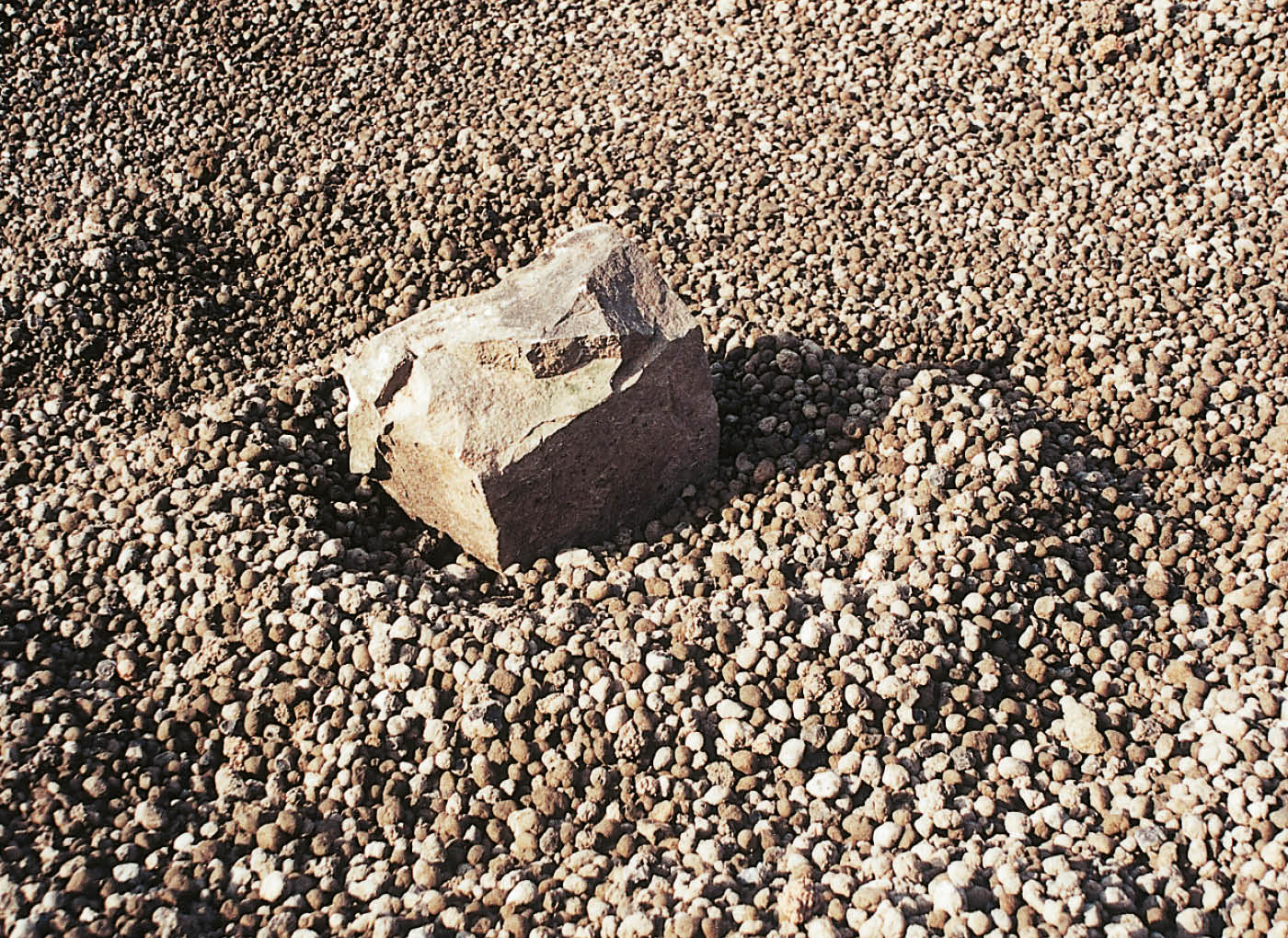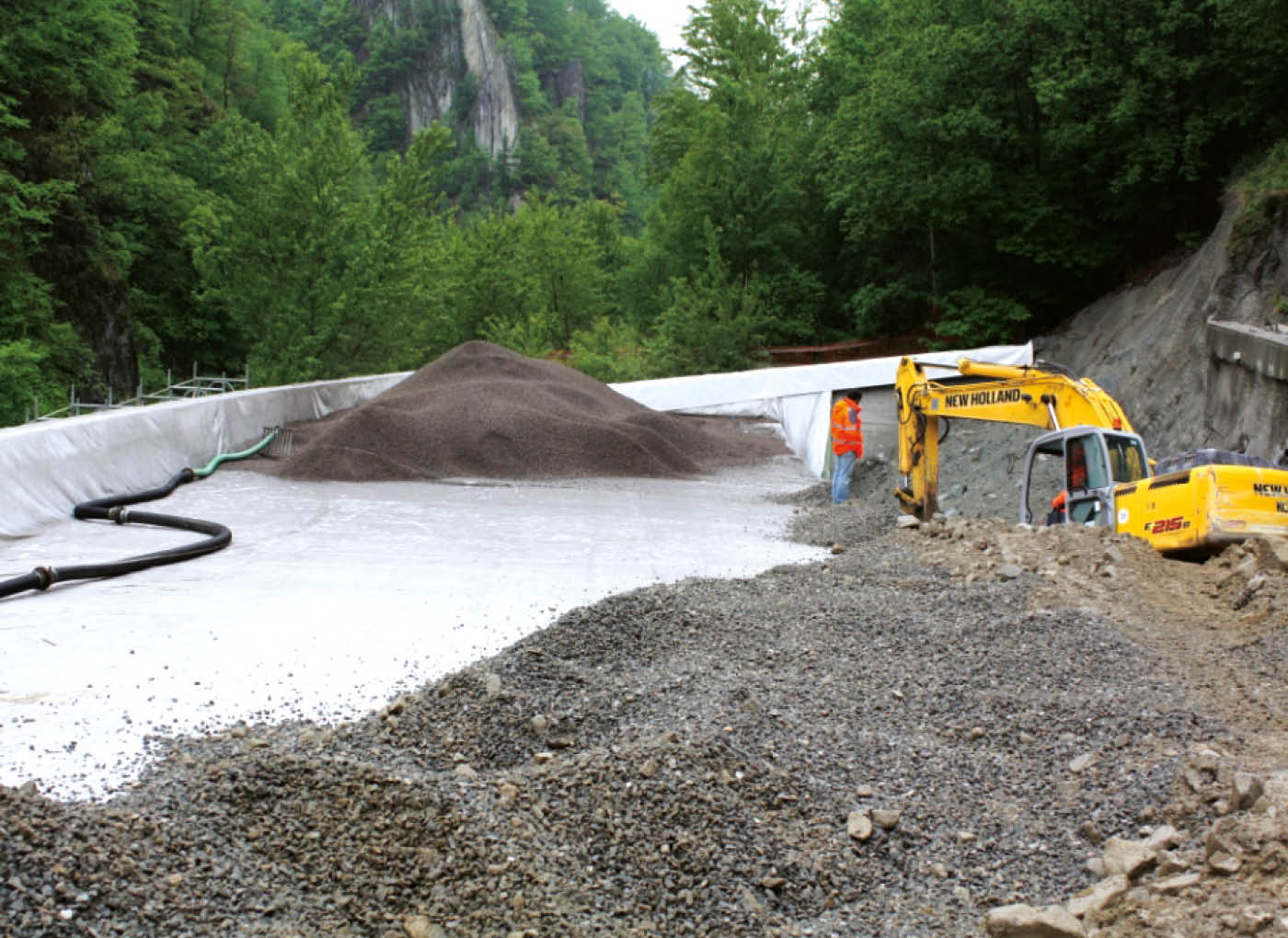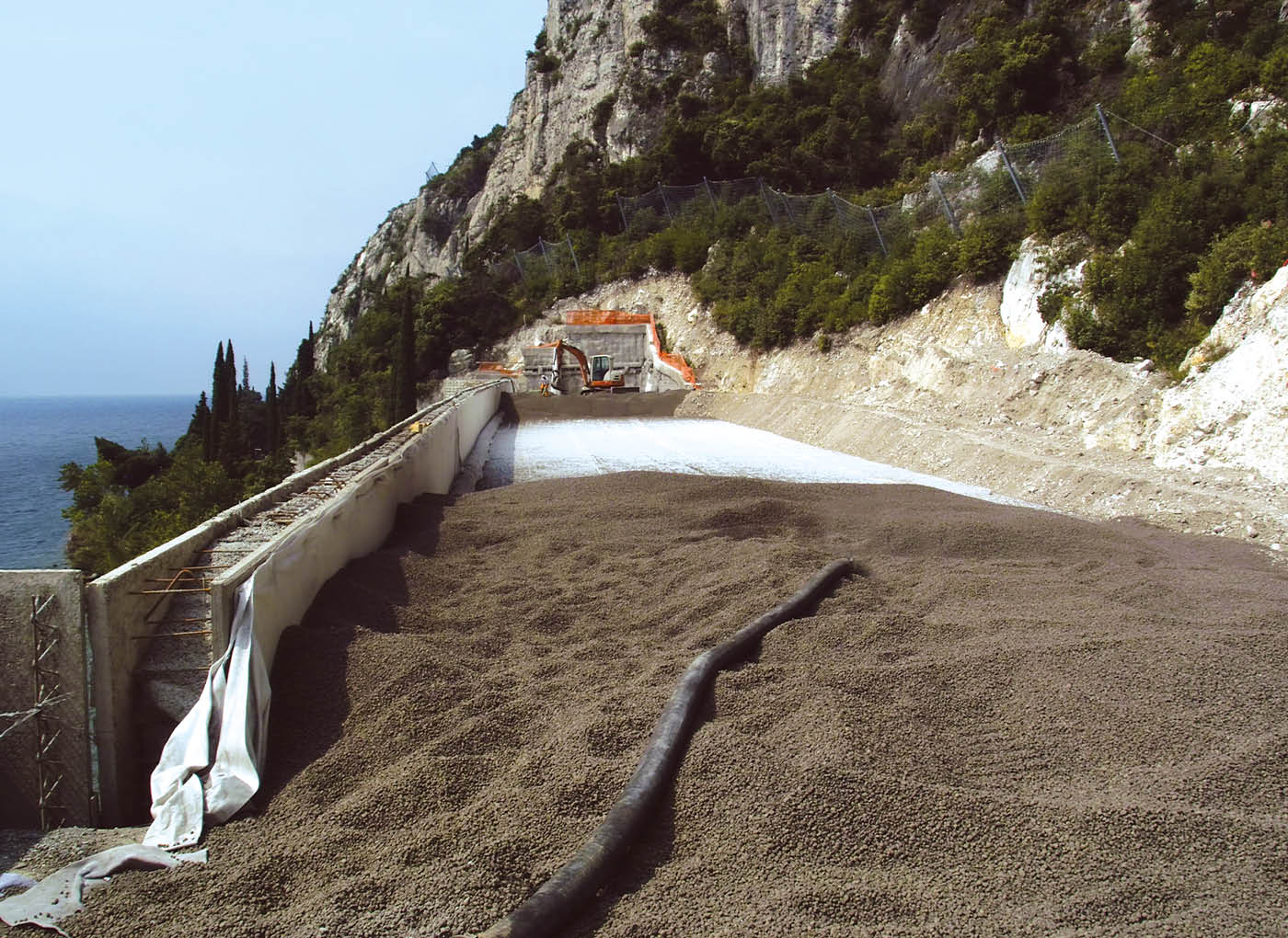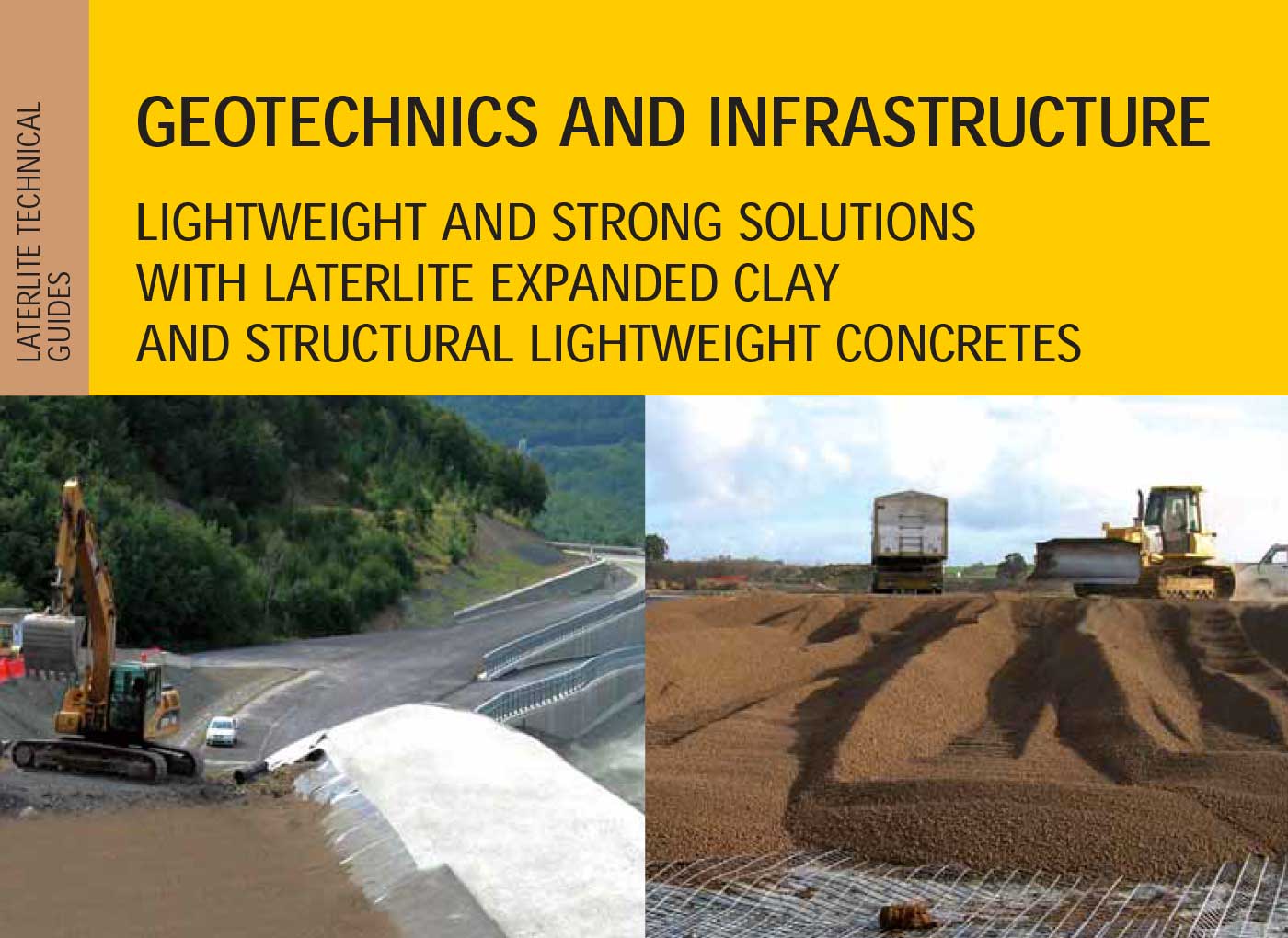In rock shed, rockfall protection trenches, runaway ramp in motorways, gravel traps in motor racing circuits as well as in all “passive protection” systems, loose Laterlite Expanded Clay is an excellent means for dissipating the kinetic energy of a sudden impact. In fact, the low specific weight of the granules means that the loose unconfined material is highly deformable and for that reason much more effective than heavy granular materials such as gravel.
Thanks to these characteristics, expanded clay is used for various purposes in road and infrastructure construction.
- Rock sheds and landing beds and for rockfall protection: in structures that protect roads or railways below slopes where there is a risk of falling rocks, expanded clay is used as a landing bed for boulders. These will tend to sink into it and be absorbed without re-emerging.
Compared to gravel, expanded clay imposes a significantly lower static load, and thanks to its efficient energy dissipation it reduces the dynamic action transmitted to the supporting structures, enabling concrete rock sheds roofs to be thinner with less reinforcement.
- Emergency road escape lanes (runaway ramps): escape lanes are often provided on long steep road descents, for vehicles in difficulty that need to escape. These lanes terminate in a bed of expanded clay, ensuring that any residual kinetic energy is dissipated as the vehicle sinks into the expanded clay and comes to a stop.
- Emergency gravel traps at car and motorcycle racing circuits: at racetracks all over the world, expanded clay is used in the gravel traps run-off areas at the most dangerous corners and bends, to reduce the speed of cars and motorcycles.
- Road restraint at danger points: Laterlite Expanded Clay is used in various impact protection and road restraint systems (compliant with EN 1317) at danger points of road infrastructure such as exit ramp crash cushions, piers, parapets, openings in guard rails, and buildings (toll booths, cabins, etc.).
CONTACT US




